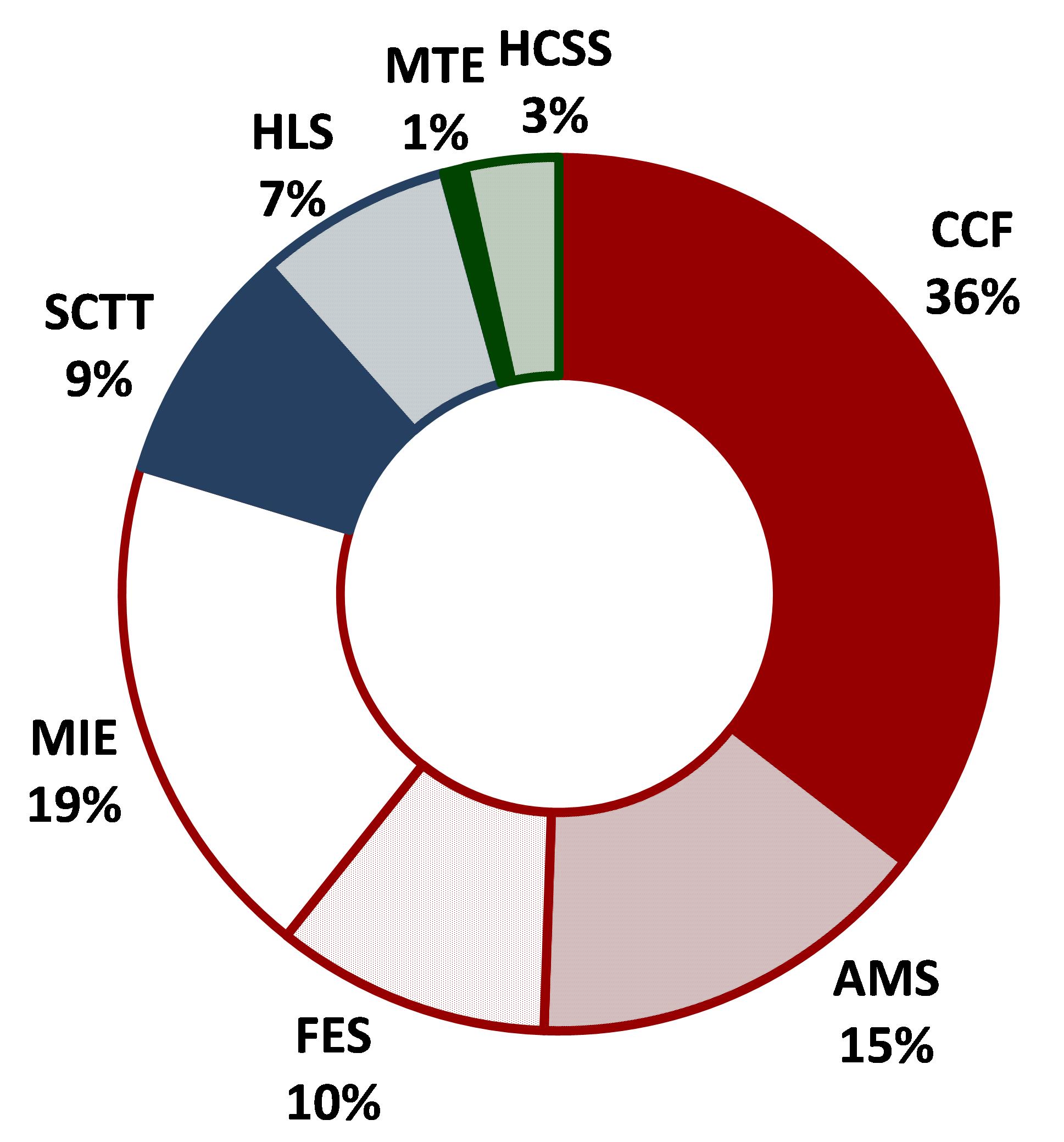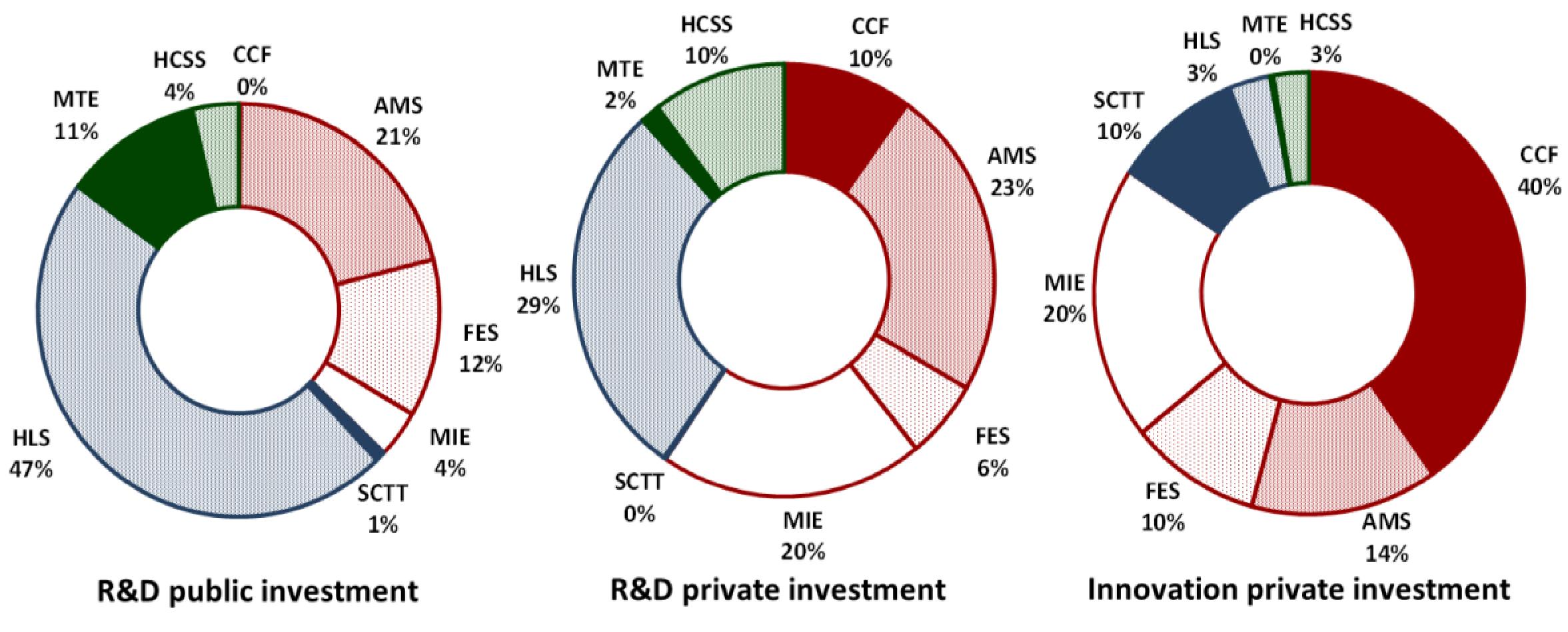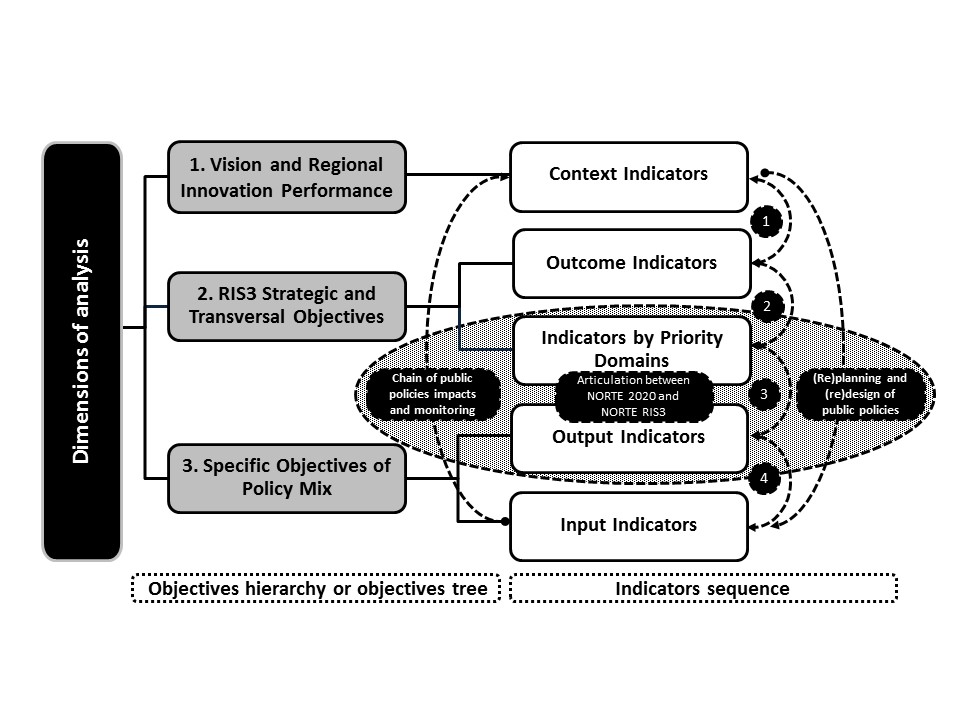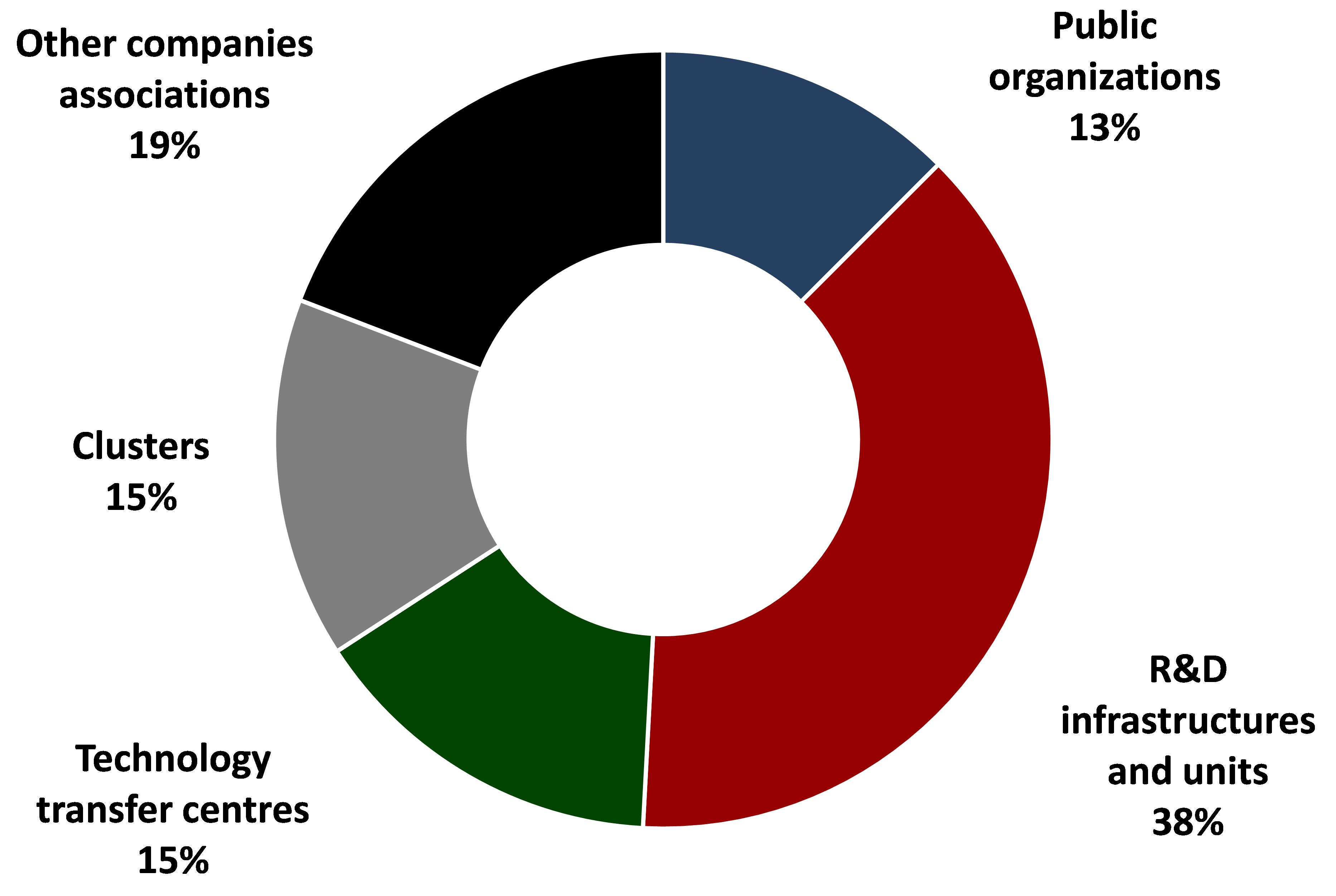Smart Story: Monitoring the Smart Specialisation Strategy of the Norte Region (NORTE RIS3)
The Norte Region, Portugal, provides an account regarding the monitoring system it has developed to better analyse Smart Specialisation priority domains and to fine -tune public policies accordingly.
Importance of Smart Specialisation priority domains for the monitoring exercise of the Norte Region
The NORTE RIS3 has eight smart specialisation priority domains, classified into Core, Emerging and Wild-card activities. The Core ones present a strong industrial nature and correspond to the consolidated areas of the regional economy, with a potential to articulate themselves with other priority domains (Emerging and Wild-card). The Emerging priority domains present an important base of resources, assets and relevant economic opportunities, but their valuation are still underneath their potential. The Wild-card priority domains relate to the investment and betting fields, whose resources and assets can constitute regional development opportunities and that underly competitive advantages.
The priority domains classified as Core are: (i) “Culture, Creativity and Fashion” (CCF), (ii) “Mobility Industries and Environment” (MIE), (iii) “Advanced Manufacturing Systems” (AMS) and (iv) “Food and Environmental Systems” (FES). The domains classified as Emerging are: (i) “Health and Life Sciences” (HLS) e (ii) “Symbolic Capital, Technology and Tourism” (SCTT). Lastly, the domains (i) “Marine Technologies and Economy” (MTE) and (ii) “Human Capital and Specialised Services” (HCSS) are considered as higher risk regional investments (Wild-card).
These priority domains were crucial for the setup of the criteria to analyse projects funded by the European Structural and Investment Funds (ESIF), European Regional Development Fund (ERDF) and European Social Fund (ESF). Based on these criteria, about 5100 projects were approved, involving approximately 4 thousand million euros worth of investment in Thematic Objectives (TO) 1, 3, 8 and 10 and Investment Priorities (PI) 1a, 1b, 3a, 3b, 3c, 8v, 10ii, 10iv and 10a.
Three main challenges and difficulties associated to the monitoring exercise of the Norte Region
• Gap in the ESIF information management system to identify project and beneficiary according to priority domains
The ESIF’s information management systems are not always prepared to address all needs, namely linking approved projects’ information and its beneficiaries to the different priority domains, fundamental for their respective indicators calculation. There was a need to include a functionality in the information systems that allowed for classifying projects by priority domain, and reclassifying them in order to calculate the respective aggregate indicators for each policy instrument, investment priority and thematic objective.
• The calculation and measurement for RIS3 monitoring are based on the potential rather than effective public policy impact
The majority of the projects are still not physically and financially complete, making it especially difficult to quantify both output and outcome indicators. This exercise was developed based on the outputs and results of the approved projects, allowing for the analysis of the potential public policy effects framed as part of NORTE RIS3 and not for its actual effects.
• Delay in getting access to national and Eurostat data regarding ESIF funded projects
Context data and their respective indicators are produced by the national and European statistic systems, with significant delay relative to each year report of ESIF’s funded projects’ aggregate output and outcome. There was a need to establish correlations between approvals in the different priority domains and, considering its characteristics, i) the higher or lower potential of intensification of the regional entrepreneurial base; ii) the evolution of regional context indicators, such as “Patent applications to the European Patent Office per billion GDP (in purchasing power standard)”; iii) “the Proportion of gross expenditure on development of enterprises in Gross Value Added (%)”; iv)“the Proportion of turnover of enterprises with product innovation activities (%)”; v) or “the Proportion of new enterprises' creation in high and medium-high technology sectors (%)”.
Analysing public and private investment in R&D and innovation in the eight Smart Specialisation priority domains
Considering the importance given to the output indicators by priority domains in the Monitoring System of NORTE RIS3 and the monitoring exercise of its policy mix, the distribution can be seen in the figure below.

Figure 1 – Investment by priority domains of NORTE RIS3
Source: Monteiro, Meira, Santos, Leite, Guimarães & Gomes (2019)[1]
The public and private investments by priority domains is divided respectively between Core (80%), Emerging (16%) and Wild-card (4%) These results were somewhat expected, as they are in line with the relevant resources, assets and entrepreneurial bases of the Norte Region. However, there are some differences when this analysis is disaggregated. In order to understand the thematic articulation of the NORTE RIS3 policy mix, it is crucial to analyse the potential alignment between the public and private R&D investment and the investment on innovation by companies.
Analysing the potential alignment between public and private R&D investment as well as innovation investment by companies
Figure 2 notably shows that the public sector is more inclined to invest in R&D in Emerging and Wild-card domains such as “Health and Life Sciences” and “Marine Technologies and Economy”, whilst the private sector is more likely to finance the innovation of Core domains, notably “Culture, Creativity and Fashion”.

Figure 2 – Public and private investment in R&D and innovation in NORTE RIS3
Source: Monteiro, Meira, Santos, Leite, Guimarães & Gomes (2019)
This information is particularly relevant bearing in mind that the economic and social context of the regional economy has changed, going from historically high unemployment rates to a situation that is close to full employment. The medium-run economic growth is now conditioned by gains in productivity, which might imply eventual changes in the hierarchy of the priority domains. There is the possibility that some of the potential gains stemming from productivity and economic growth are associated to more technology-dependent domains, such as “Advanced Manufacturing Systems”, “Health and Life Sciences”, “Marine Technologies and Economy” and “Mobility Industries and Environment”, for which a significant investment in R&D has been registered, both from the public and private sectors.
These domains correspond to economic activities that are high and medium-high technologically intensive, according to the OECD classification. It is crucial to have more proactivity in public policy to support entrepreneurship and investment in these domains that boast of a critical mass of resources and assets, but still lack of an entrepreneurial base to value them economically. The Smart Specialisation monitoring exercise has allowed the Norte Region to better identify the four technology-intensive domains that should be of priority investment in the medium and long-run.
Development of existing policy instruments and mechanisms to support specialisation priority domains
This monitoring exercise also highlights that the NORTE RIS3 has proven very effective in selecting projects that support the technological intensification of the productive base, in line with the objectives of the development strategy of the Norte Region, falling under TO 1. Besides, it is worth noting that the Entrepreneurial Discovery Process (EDP) has the potential to reinforce stakeholders’ coordination in technology intensive domains. However, it is necessary to improve the articulation between both the governance of the NORTE RIS3 and ESIF in order to further support the opportunities emerging from the EDP with public funds.
However, increasing efficacy does not imply the creation of new public policy instruments but rather simply upgrading the articulation of existing ones in thematic, spatial and temporal terms, involving the governing model of NORTE RIS3. It is crucial to develop specific calls for projects that target specific priority domains, either to support an existing dynamic, to compensate for insufficient investment in high potential domains, or to respond to the funding needs of initiatives resulting from the EDP. These calls for specific projects should also consider critical territories that underlie some growth and economic development issues, such as rural municipalities. It is also important to better combine different policy instruments and funding options from ESF and ERDF. For instance, ESF aids to doctoral programmes should be associated to ERDF funding and to medium-term I&D projects in each call by priority domain.
Short quote: "Monitoring the smart specialisation strategy is crucial for both the fine-tuning of public policy and as a way to engage with regional stakeholders and their entrepreneurial discovery processes".
Webpage link: Norte Region Smart Specialisation Strategy website.
Additional information
Structure of the Monitoring System of NORTE RIS3:

Figure 3 – Monitoring System of NORTE RIS3
Source: Monteiro, Santos, Guimarães & Silva (2018)[2]
On the left-hand side, we can find the objectives properly hierarchized that can also be entitled “objectives’ tree”. The first two levels constitute the two groups of objectives that are defined in the NORTE RIS3 strategy. The Region does not dispose of an autonomous budget, therefore it needs to mobilize resources from the Norte Regional Operational Programme (OP) (NORTE 2020) and from the Competitiveness and Internationalization OP (COMPETE 2020), and relate to the ex-ante conditionality. The third level corresponds to the public policy goals of those OP.
On the right-hand side, the indicators sequence indicate the type of indicators according to the main goals to be met. Hence, i) the “Vision and Regional Performance of Innovation” are related to “Context Indicators”; ii) the “Transversal and Strategic RIS3 Objectives” relates to two types of indicators, including “Outcome” and “Priority Domains” indicators; iii) the “Specific Objectives of the Policy Mix” correspond with both “Input Indicators” as well as “Output Indicators”.
Monitoring and NORTE RIS3 governance model:
The conclusions arising from this exercise have been debated and presented in different layers of the NORTE RIS3 governance model. Various meeting haven taken place between June 12th and July 16th 2019, involving the eight Regional Smart Specialisation Platforms (one per each priority domain), with the participation of about 120 regional stakeholders: public organizations, R&D units and infrastructures, technology transfer centres, clusters and other companies associations.

Figure 4 – Participants in the Regional Smart Specialisation Platforms
Source: Information system of NORTE RIS3
Besides, in September 23th 2019, a meeting was set up with Norte's Regional Innovation Council, which is formed by one representative for each of the Regional Smart Specialisation Platforms and by management organizations of the public policies. During this meeting, the Monitoring Report on Norte’s Smart Specialisation Strategy was approved, as well as the S3 NORTE 2020 Initiative for the revision of NORTE RIS3, in the preparation of the European policies programming period 2021-2027, based namely on conclusions and recommendations that came from this monitoring exercise.
[1] Monteiro, R., Meira, R. Santos, P., Leite, V., Guimarães, C. & Gomes, J. (2019). Estratégia de Especialização Inteligente da Região do Norte. Relatório de Monitorização. Porto: CCDRN. Available at:
https://norte2020.pt/sites/default/files/public/uploads/noticias/RIS3_lupa_PDF.pdf
[2] Monteiro, R., Santos, P., Guimarães, C. & Silva, A. (2018). Norte Region Smart Specialisation Strategy (NORTE RIS3). A Monitoring System Methodological Approach for MONITORIS3 Project. Available at:
